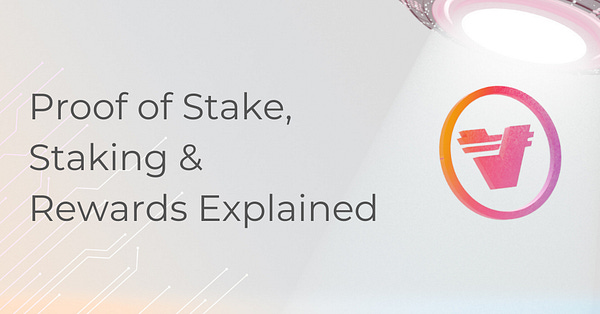How Does the Blockchain Reach a Consensus?
Proof-of-Work, Proof-of-Stake, and Validation
Let's Make a Deal

Consensus, according to Merriam-Webster, is defined as "general agreement" and "group solidarity of belief or sentiment." In a typical business or organization, a board or leader makes decisions that guide a path forward.
Without a single authority in charge, the decentralized blockchain makes this sort of decision-making impossible. Instead, consensus mechanisms solve this dilemma: they transfer decision-making authority to every node and validator (miners who verify transactions) to continue adding new transactions (blocks) to the network.
The two most popular consensus protocols are Proof-of-Work and Proof-of-Stake, but there are many more. All of them set forth a specific requirement to ensure agreement among the network and allow transactions to take place.
Can I trust consensus mechanisms?
In short, consensus mechanisms remove the need for trust. This is because blockchain networks run on an incentivized positive feedback loop.
Miners run code to verify transactions and market supply are correct. They are rewarded for this with a bitcoin reward. They are incentivized to agree on the system because agreeing on a fake transaction would cause distrust, and the price of bitcoin to plummet, and their reward to go to zero. Investors are happy because the economy is self-regulated.
Blockchain mining is referred to as a "trustless" payment system because the decentralized network has to have a majority agree in order to move forward. The network doesn't automatically assume all participants will act ethically. The consensus mechanism and blockchain ledger make the "agreed-upon truth" available to everyone.
The big takeaway here is that the majority of miners act in agreement because they are financially incentivized to do so. To break this cycle, a group of bad actors would have to mount a 51% attack, which would also create a negative ROI.
How does it work?
Consensus mechanisms, or consensus protocols, are essential for blockchain. Each blockchain, from Bitcoin to Ethereum to Helium, sets forth a requirement for the node operators and miners to work in agreement under the conditions of the consensus. The consensus mechanism acts as a security layer: consensus must be achieved for a transaction to be registered on the blockchain ledger. Because the blockchain is distributed, even if individual nodes fail, the consensus mechanism will continue.
Bitcoin was the first to use Proof-of-Work as its consensus mechanism. Since then, with the rise of innovative blockchain development, many new consensus protocols have been implemented.
In 1982, SRI International Research Institute laid out the Byzantine Generals' Problem. The thought experiment was "developed to describe a situation in which, in order to avoid catastrophic failure of the system, the system's actors must agree on a concerted strategy, but some of these actors are unreliable." The consensus mechanisms used on blockchains developed from this problem, allowing for a "coherent global view of the system's state." Solutions are also used in SpaceX flight systems and Boeing 777's.
The Two Consensus Protocol Examples
Proof-of-Work (PoW)
Proof-of-Work is the original consensus mechanism for blockchain technology. It requires the miners solving complicated mathematical puzzles, serving as the proof that computational effort has been performed. The other members of the network can quickly verify that the correct work has been performed. The miners are rewarded for their work with newly-minted coins.


Proof-of-Stake (PoS)
In Proof-of-Stake, miners process and validate transactions by proving ownership of a certain amount of the asset. This gives them "skin in the game," where the stake is the asset that is locked up. If the validation is done dishonestly, some or all of the locked up asset is lost. Proof of Stake was created as an alternative to Proof of Work and there remains intense debate of the tradeoffs between the two.


Facts and Stats:
The first cryptocurrency to adopt the Proof-of-Stake protocol was Peercoin.
Proof-of-Spacetime is a newly developed protocol used by Filecoin.
The Proof of Work algorithm of Bitcoin reaches consensus approximately every 10 minutes.
Ethereum is set to upgrade to Ethereum 2.0 in the next couple of years, which includes a transition away from PoW towards PoS.
Resources:
Read about 8 different consensus mechanisms that are used on various blockchains.
An in-depth look at Proof-of-Work versus Proof-of-Stake.
CoinMarketCap on consensus mechanisms.
An introduction to the Byzantine Generals' Problem.
PoS, PoW, PoB comparison.
Blockchain Consensus metaphors that anyone can understand.
➡️ About FirstWatch Crypto ⬅️
FirstWatch Crypto was started by Dan McGlinn (@DigitalDanMcG)and John "Blaize" Hrabrick (@blaizebitcoin) who have been investing in the space for a combined 8 years. FirstWatch Crypto is on a mission to simplify the crypto investment landscape.
Disclaimer: None of the above is investment advice. This blog is published for entertainment and informational purposes only. The ideas expressed are not intended to provide specific advice or recommendations for any individual or on any specific security or investment product. Nothing on this blog constitutes investment advice, performance data, or any recommendation that any security, portfolio of securities, investment product, transaction, or investment strategy is suitable for any specific person. You should not use this blog to make financial decisions. We highly recommended you seek professional advice from someone who is authorized to provide investment advice. You should always do your own research before investing in cryptocurrencies. It is a volatile market.
